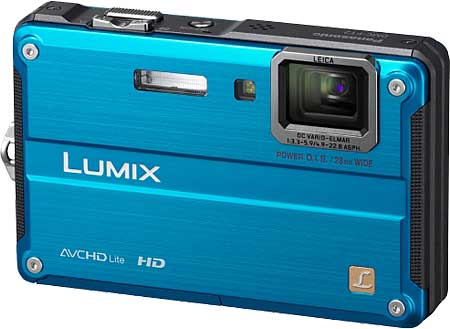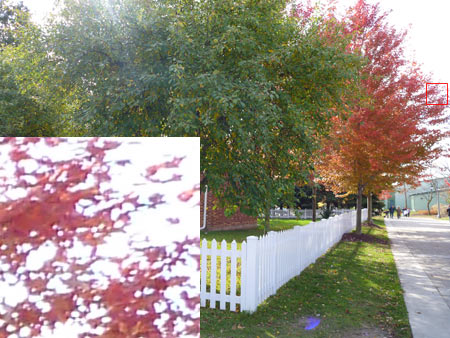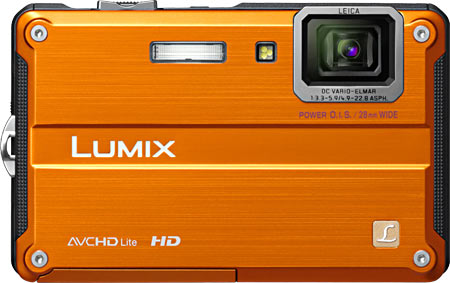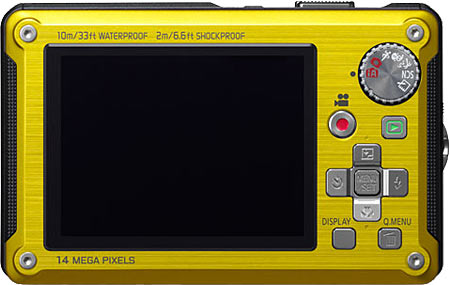Review Date: November 14, 2010
Category: Point-and-Shoot
EXECUTIVE SUMMARY
This Panasonic Lumix DMC-TS2 Review is based on a production model. All sample images are unretouched, except where specified.
The Panasonic Lumix DMC-TS2 is hard-to-beat as a take-anywhere point-and-shoot camera. Not only does it look and feel well built but it is also waterproof, dustproof, shockproof and freezeproof — ready to go where you want to go.
Handling of an ultra compact camera can be slippery and using it in wet conditions won’t help. Fortunately, the TS2 comes standard with a wrist strap that has an adjustable eyelet to fasten it tight around your wrist. Also included as standard is a non-slip silicone skin that wraps around the camera and affords it a surer grip.
Image quality, as expected on a point-and-shoot in this category, is good enough for snapshots. Careful exposure and composition can result in beautiful shots worth enlarging and framing.
If you are looking for an ultra compact point-and-shoot to take on a trip, the Panasonic Lumix DMC-TS2 can be your perfect companion. You won’t have to worry about dropping it, getting it wet or bumping it, and it will bring home decent snapshots to fondly remember your trips by. Recommended.
IMAGE QUALITY
The Panasonic TS2 is a digital camera targeted to point-and-shoot photographers who want a waterproof and shockproof camera. It has 14.1 megapixel resolution (on a 1/2.33 in. CCD image sensor), and a Leica DC Vario-Elmar 4.9-22.8mm (28-128mm, Equiv.135) ASPH 4.6x wide-angle optical Zoom-Nikkor lens, with a maximum aperture of F3.3(W)-F5.9(T), with Power Optical Image Stabilization.
We find the overall image quality of the Panasonic TS2 to be very good at ISO 80 to ISO 100 with low noise and good detail.
| 4.6x Optical Zoom | |
 |
 |
| Wide-angle 4.9mm (28mm, 35mm equivalent) |
Telephoto 22.8mm (128mm, 35mm equivalent) |
The Panasonic TS2 has a 4.6x optical zoom lens. In the above pictures, we show the coverage for 28mm and 128mm. It takes about 3 sec. to zoom from wide-angle to telephoto (I counted 22 steps).
Besides Intelligent Auto and easy-to-use Scene Modes, the Panasonic TS2 also has Programmed Auto mode.
Macro can be as close as 5 cm (2 in.). The AF frame turns green to indicate successful focus; a blinking red frame indicates focus has not successfully locked.
In low-light, the AF Assist Lamp automatically kicks in if you have turned it ON [MENU – REC- AF ASSIST LAMP – ON].
There is also a LED light that you can use to provide extra illumination when required. You turn the LED light on in Q.MENU – LED LIGHT – AUTO, ON, OFF.
| Auto White Balance Indoors | |
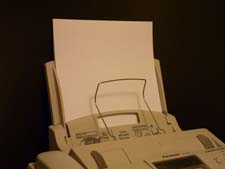 |
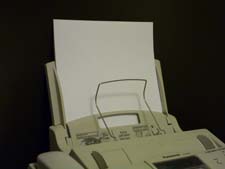 |
| AWB | Custom WB |
As the above two pictures show, the Auto White Balance (AWB) is not quite accurate indoors under artificial lighting (I have two energy-saving fluorescent light bulbs on the ceiling). The Panasonic TS2 allows WB to be easily set manually and this brings out the real colors. AWB works very well in natural light.
[Menu – WHITE BALANCE – WB SET – point to a white sheet of paper – MENU/SET to Measure]| ISO Comparisons | |
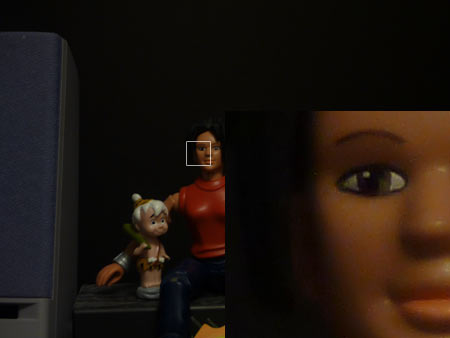 |
|
| ISO 80 | |
 |
 |
| ISO 100 | ISO 200 |
 |
 |
| ISO 400 | ISO 800 |
 |
|
| ISO 1600 | |
The Panasonic TS2 has 6 ISO settings going from ISO 80 to ISO 1600, plus an extended ISO 6400 in High Sensitivity mode. The 100% crops above (area delimited by the white square) demonstrate the noise at ISO 80 to 1600. At ISO 80 and 100, noise is under control. Noise starts to be slightly visible at ISO 200 but is still very acceptable. Noise (with detail loss) is quite visible at higher ISOs.
As the above ISO samples show, you won’t be able to take low light pictures at the low ISOs because the shutter speed and aperture ranges available are too limited to obtain a correct exposure. ISO 80 to 200 give underexposure results at normal room low light and you will have to resort to ISO 400 and above to correctly expose your pictures (i.e. if you do not want to use flash). For small prints and for Web display only, you could go as high as ISO 800.
You can set the upper ISO limit the camera should use [MENU – REC – INTELLIGENT ISO – ISO MAX 400, ISO MAX 800, ISO MAX 1600]. We recommend you set this is ISO MAX 400 for best image quality. However, for low light and underwater photography where there is not enough light, you will need to let the camera use higher ISOs to be able to capture a correctly exposed shot.
We did not find much CA in everyday shots. The area delimited by the red square at top right, and reproduced at 100% crop at bottom left, shows no purple fringing.

Long Exposure - 28mm (equiv.), Manual, Spot AF, 60 sec., F8, ISO 100, Custom WB, Self-timer (2 sec.), Tripod Used
The LCD screen of the TS2 gains up in low light (though it’ll display a grainy blue image). The Panasonic TS2 allows the use of a long shutter speed of up to 1 sec. in P mode and 15 sec., 30 sec. and 60 sec. in Starry Sky scene mode. This allows some night landscape photography, though you don’t have too much control over it (e.g. no WB in Starry Sky scene mode). Generally, with image sensors, noise becomes more prominent the longer the shutter is left open. Noise Reduction kicks in at long exposures, and you’ll notice a longer processing time (approx. twice as long) before the next picture can be taken.
To test this noise reduction algorithm, we take a low-light indoors shot. Since we do not have much control in Starry Sky scene mode, we could not use the longest shutter speed here. Instead, the above picture was shot at ISO 400 for 1 sec., aperture F3.3. The noise reduction seems to be working well, producing a nice smooth blurring effect of the background.
View the Panasonic TS2 Photo Gallery
HANDLING & FEEL
It feels refreshing to be able to take this camera to the beach or pool — in fact, to flaunt it in other people’s face as they recoil in horror when you (purposefully) drop it onto the floor, sand or dunk it under the water. And, as they see you pick it up, dust it off and go about taking more pictures, they are amazed. They wished their camera could do that.
“That” is being waterproof down to a depth of 10 m (33 ft.), shockproof (being able to survive a fall) from a height of 2 m (6.6 ft.), dustproof and freezeproof.
The front of the camera has the lens at the top right corner, the Self-timer indicator/AF Assist Lamp/LED Light, and the Flash.
The TS2 looks tough all right with the front and back plate each [seemingly] screwed in tight by 4 screws. It easily fits into a jeans pocket. It comes with a protective silicone skin for those times when you are heading into extreme sports territory and require extra protection. Best of all, it comes with a wrist strap with a fastening eyelet — essential to ensure it does not slip from your hand in wet conditions and perhaps fall at the bottom of the pool or sea bed.
On the top of the camera, from right to left, you’ll find the Zoom lever, Shutter Release button, Power ON/OFF button, Microphone and Speaker.
It takes approx. 3 sec. to zoom 4.6x (optical) from wide (28mm equiv.) to tele (128mm equiv.) and I counted about 22 steps. The Shutter Release button is quite soft, the contrary of the Zoom lever which is quite hard and tiny to press. The Power button is recessed so you won’t press it by mistake.
The back of the camera is taken up by the 2.7-in. (230k-dot) LCD with all other controls to the right side. There is a Mode Dial, dedicated Movie button, Playback button, Cursor buttons, Q.Menu button and Display button.
The Mode Dial has iA (Intelligent Auto), P (Normal Picture), Sports, Snow, Beach & Surf (3m / 10 ft. underwater and at the beach), Scene Mode, Clipboard (memo).
TIP: Whenever you dip into the pool or swim in shallow waters (up to 3 m / 10 ft.), use the Beach & Surf mode that is conveniently on the Mode Dial. If you intend to swim deeper than that (up to 10 m / 33 ft.), select the Underwater scene mode in the Scene Mode menu [ SCN on Mode Dial – Menu – Underwater ]. This mode enhances color which can get muddied and paler as you go deeper underwater. For those who want to take their camera even deeper, Panasonic has an optional marine case that will allow that.
The Cursor buttons (in P shooting mode) has:
- UP – Exp. Comp./AEB/WB Adjust: Exp. Compensation = +/- 2EV, Auto Exposure Bracketing = +/- 1/3, +/- 2/3, +/- 1 EV. WB Adjust is available only when you are using Manual WB.
- RIGHT – Flash: Auto, Auto + Red-Eye, Forced Flash, SLow Sync. + Red-Eye, Off.
- DOWN – Macro/AF Tracking: Off, AF Macro, Macro Zoom.
- LEFT – Self-timer: Off, 10 sec., 2 sec.
When you are in iA shooting mode, pressing UP, then DOWN allows you set AF Tracking. Press UP twice to cancel AF Tracking. Since AF Tracking has taken over the DOWN cursor, you cannot set Macro — but that’s not a problem because macro is automated in iA mode (i.e. the camera knows when you get real close to your subject and sets i-Macro automatically).
AF Macro can be as close as 5 cm (2 in.) at wide-angle. Do not use Macro Zoom since it is digital zoom (x3) and will degrade your image quality.
Q.MENU displays a Quick Menu on screen and you can quickly choose some of the more important functions: Burst, AF mode, WB, ISO, Intelligent Exposure, Picture Size, Rec Quality, LED light, LCD mode.
Press the Display button to switch between displaying info on the LCD screen (including a Live Histogram), hiding info, and displaying a grid. When you turn the LCD off completely, the ring lamp around the Power ON/OFF button shines green to let you know the camera is still ON.
The Playback button displays your picture. Touch the Shutter Release button to immediately return to shooting mode.
On the bottom of the camera, there is the battery/memory card compartment and the plastic tripod receptacle. A release lever ensures the battery door does not open by mistake and there is a latch that holds the battery in place.
On the right side of the camera (viewed from the rear) is a similar door and release lever mechanism to protect the HDMI socket and the AV/DIGITAL/MULTI socket.
Startup time is fast at about 1 sec. Shot to shot time is about 2.5 sec. (4 shots in 10 sec.). There is no practical shutter lag when you prefocus. AF time is about 1 sec. in good and low light.
Included in the box is a rechargeable Li-ion battery DMW-BCF10PP (3.6V 940mAh 3.4Wh) that can take about 360 shots (CIPA) on a fresh charge. A Battery Charger DE-A59 plugs directly into a wall electrical socket and recharges a depleted battery in approx. 130 min.
The Panasonic DMC-TS2 uses the SD, SDHC, and SDXC memory card. It has approx. 40MB of internal memory.
USER’S EXPERIENCE
Friday, October 8, 2010 – Here’s what I receive in the box:
- Panasonic TS2
- No memory card [I received a 2GB SD card for the review]
- Li-ion Battery DMW-BCF10PP 3.6V 940mAh 3.4Wh
- Battery Charger DE-A59
- Wrist Strap
- USB Cable and A/V Cable
- Documentation: Basic Operation Instructions
- Software CD: Operating Instructions for advanced features (re: User’s Manual), ViewNX 2
Everyone should have a tough camera for those occasions when you would usually leave other cameras at home for fear they’ll get damaged by water, salt spray, sand, mud, dust or bumps. The Panasonic TS2 certainly fits this description and is ultra compact enough to slip in your pocket. It gives its best results when used in the sunny outdoors.
The Panasonic TS2 is a point-and-shoot ultra compact that takes very good pictures at the low ISOs in good lighting, ideal for the casual user who loves hiking, boating, skiing and traveling and needs a camera tough enough to survive these activities.


